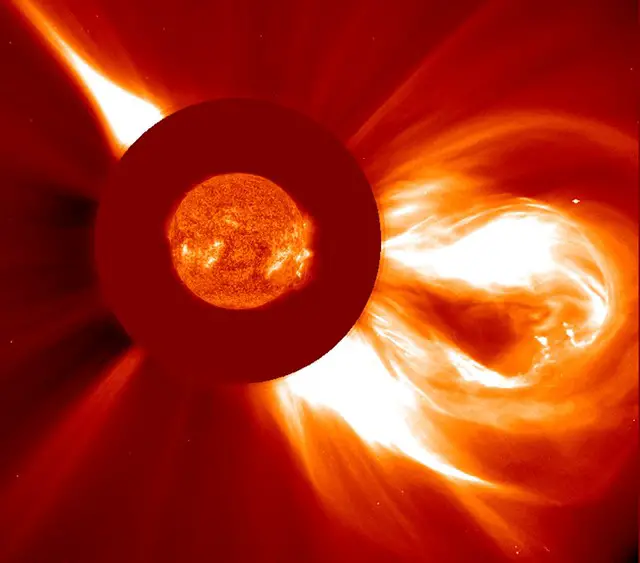The sun, our closest star and the predominant force in our solar system, radiates as a celestial entity of immense dimensions. The gravitational force it exerts spans great distances, determining the paths of planets and governing the behavior of our celestial surroundings. Astronomers utilize the notion of ‘solar mass’ as a fundamental unit to measure the size of celestial objects in relation to the mass of the sun. This phrase serves as an essential framework for comprehending the immense scale and intricate nature of the world. Let’s begin an investigation into the fascinating domain of solar mass and uncover its importance in the cosmic fabric.
The Concept of Solar Mass
The solar mass is a fundamental unit of measurement in the field of astrophysics. It functions as a notable measure of the mass of a celestial object in relation to the mass of the sun. This fundamental measurement not only assists scientists in quantifying vast quantities but also offers a practical and succinct approach to expressing these values without becoming overwhelmed by unwieldy statistics. The solar mass, represented by the sign M⊙, is a fundamental unit in astronomical computations. It provides crucial information about the size and movement of celestial objects in the immense cosmic expanse of the universe.
The Mass of the Sun
The sun’s mass is around 4.4 × 10^30 pounds (equal to about 2 x 10^30 kilograms) or about 333,000 times the weight of the Earth, which demonstrates its tremendous gravitational force. The sun’s mass is so immense that it would be equivalent to the weight of 333,000 Earths if we were able to measure it. This image clearly demonstrates the immense disparity in size between our planet and the sun. The sun’s immense magnitude is of such magnitude that it could contain around 1.3 million Earths within its vast volume. The significant difference in size highlights the sun’s supremacy and the extraordinary power it exerts throughout the universe. The sun’s gravitational force not only influences the Earth’s path around it but also has a significant impact on the overall behavior of our solar system. The gravitational force of the Earth is responsible for keeping the planets in their orbits, ensuring a delicate equilibrium that supports the flourishing of life on our planet. The sun’s immense magnitude and gravitational impact serve as a perpetual reminder of the astonishing potency and intricacy of the cosmos.
The mass of the sun is roughly 1.989 x 10^30 kg, which makes up almost 99.8% of the total mass of the known solar system. The sun’s immense mass, accounting for approximately 99.86% of the total mass of the Solar System, emphasizes its central role in shaping the dynamics and gravitational interactions in our cosmic vicinity. The massive gravitational force of the object not only controls the paths of planets but also has a crucial function in preserving the stability and equilibrium of our celestial surroundings.
The Shrinking Sun?
Although the sun is enormous, it is not stationary. The star is in a state of perpetual change as a result of the remarkable process of nuclear fusion, which is the source of its brightness. In the center of the sun, hydrogen atoms undergo fusion to create helium, resulting in the release of an immense quantity of energy. The process of energy creation by the sun leads to a progressive decrease in mass as it emits light and heat into outer space. Over time, the ongoing process of conversion results in a gradual yet consistent reduction in the size of the sun. Scientists approximate that the sun loses around 1.353×10^20 grams of mass annually as it converts matter into radiant radiation, which sustains the life-giving cycle of our solar system.
The Significance of Solar Mass
Gaining a comprehensive understanding of the solar mass is of utmost importance for astronomers and physicists. By exploring the intricacies of the solar mass, astronomers acquire the capacity to accurately compute and make comparisons with the masses of different celestial bodies dispersed throughout the immense expanse of space. This knowledge surpasses the masses of planets, stars, galaxies, and black holes, allowing for a deep comprehension of the complex gravitational forces that shape and govern our immense universe. Furthermore, this comprehension is closely intertwined with the examination of orbital mechanics, providing significant understanding of the evolutionary trajectories of stars and the dynamic interactions of celestial entities across the cosmic timeline.
To summarize, the solar mass of the sun serves as both evidence of its immense size and a crucial unit of measurement that scientists employ to comprehend the cosmos. As our exploration of the universe progresses, the understanding and utilization of solar mass will remain a crucial component of our cosmic resources.
Sources
- Solar Mass | Wikipedia
- Solar Mass | COSMOS
- What is the mass of the sun? | Space.com
- Sun | Wikipedia
- How big is the sun? | Space.com
- The Sun | Hyperphysics
- Is the Sun shrinking? | Stanford Solar Center
![]()

I was able to find good information from your blog posts.